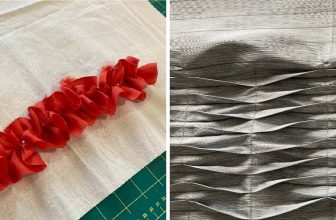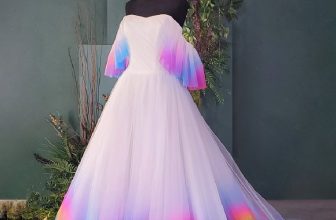How to Sew Knit Fabric
Learning how to sew knit fabric can seem intimidating and overwhelming, but it doesn’t have to be! With the right supplies and a few tips from experienced sewers, you can easily put together beautiful projects with breatheable fabrics that drape well.
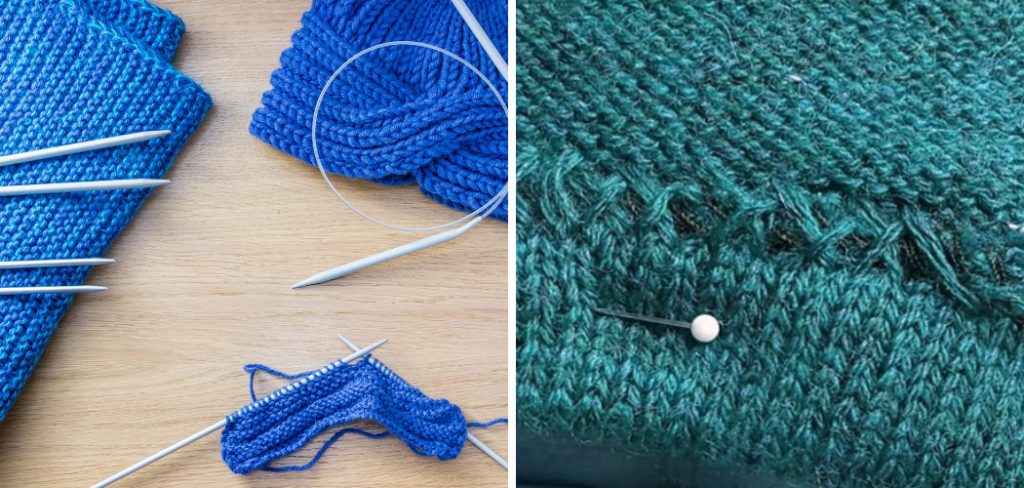
Whether you’re adding elastic around your waists or creating lovely scarves for friends, knitting has never been easier when you know what tools and techniques are best. We’ll walk you through everything from choosing the right fabric to finishing up the look so you can take on any project like a professional. Let’s get started!
What Is the Best Stitch for Knit Fabric?
The best stitch for knit fabric is the stretch stitch. This type of stitch allows your fabric to expand and contract without being constricted by tight stitching. The stretch stitch also gives a neat, professional finish that will last over time. It will help the garment hold its shape better than if you used a normal straight or zigzag stitch. It is important to use the correct needle size and thread type for the project in order to achieve maximum stretchability.
If you are using a sewing machine, look for a stitch that has two-step zigzag stretching pattern. This will give you greater flexibility when working with knit fabric and help prevent puckering or shifting of the garment as it stretches. For hand stitching, look for a small zigzag stitch that can be adjusted by looping and tying off at various points.
When stitching seams on knit fabric, always take into consideration the direction of the stretch as this will affect how your finished garment fits. Seams should always be sewn in the same direction as the stretch so that there is no pulling or distortion of shape.
It is also important to use a longer stitch length than you would for other types of fabrics as this will help the seam stay strong and secure even when stretched. Finally, avoid backstitching over seams as this can cause tension on the fabric and create unwanted puckering in the finished garment.
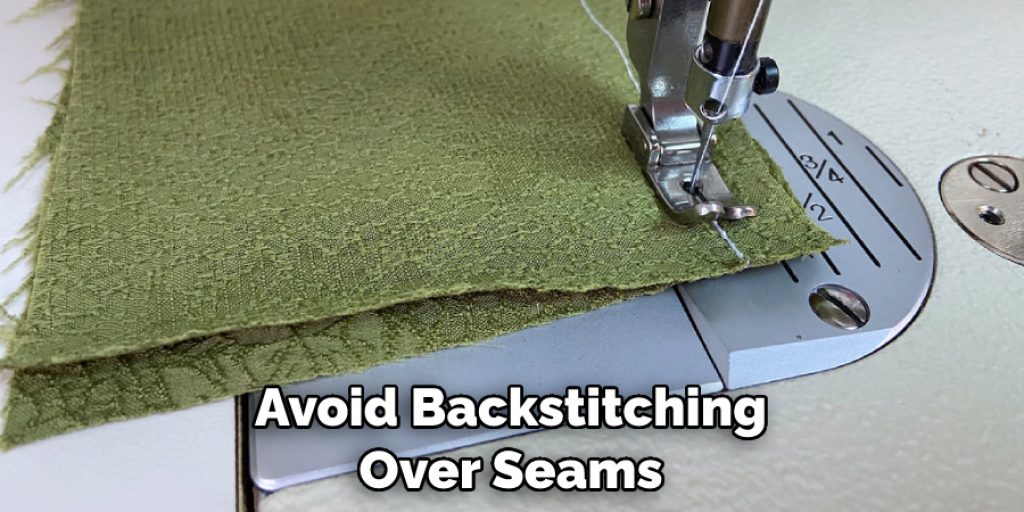
What Stitch Length for Knit Fabrics?
When it comes to sewing knit fabrics, most sewing machines come with the ability to adjust stitch length. For knit fabrics, a shorter stitch length is recommended, typically between 1-2 millimeters long. This helps ensure that the stitches don’t rip when stretched or gathered. A longer stitch can cause too much stress on the fabric and result in breaking threads or ripped seams.
Therefore, if you are working with stretchy fabrics such as lycra and jersey knits, always use a short stitch length for optimal results.
Another good tip is to use a light presser foot pressure when stitching so that your machine can feed through the fabric easier without puckering or gathering up the fabric. Additionally, use ballpoint needles as they are designed for working with stretchy fabrics and will not pierce or damage the fabric.
When it comes to hems, you may want to consider using a zigzag stitch instead of a straight stitch as this gives more flexibility when stretching the fabric. Also, many sewists like to use a double needle when hemming knit fabrics for a professional finish. This technique creates two lines of stitching which helps keep the hem from stretching out over time.
10 Methods How to Sew Knit Fabric
1. Select the Right Needle
Choose a ballpoint or stretch needle specifically designed for knit fabrics. These needles have rounded tips that penetrate the fabric without snagging or breaking the fibers, allowing for smooth and even stitching. However, if the fabric is particularly lightweight or sheer, a universal needle may be used instead.
2. Use the Correct Thread
Select a polyester or cotton-wrapped polyester thread that provides both strength and stretch. Avoid using 100% cotton thread, as it may not have enough elasticity to accommodate the stretch of knit fabrics.
When using a serger, use the same type of thread in both the loopers and needles. Match the thread to your fabric color so that it is barely visible. If a contrast color is desired, be sure to use one that complements your fabric.
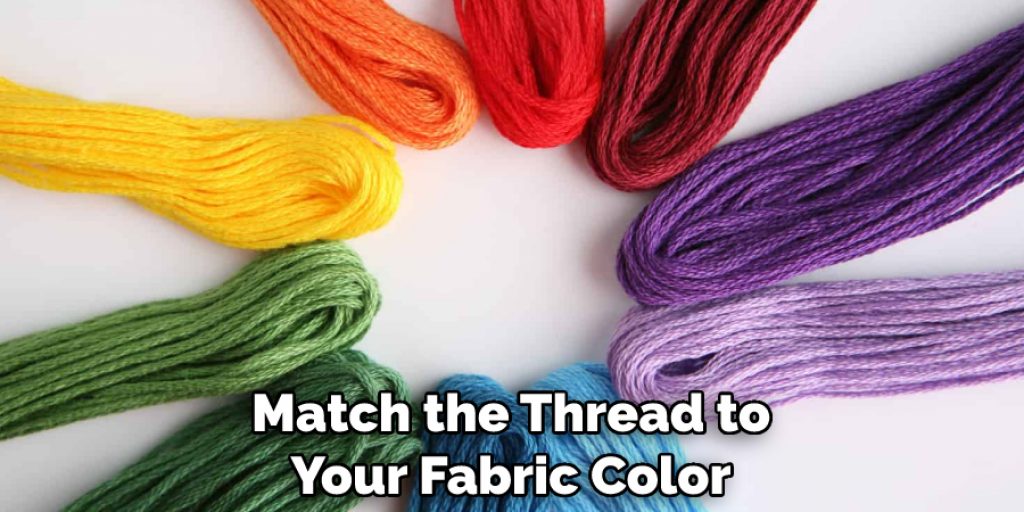
3. Set Up Your Sewing Machine
Install a stretch or zigzag stitch on your sewing machine. This stitch allows the fabric to stretch without breaking the thread. Adjust the stitch length and width based on the thickness and stretchiness of your knit fabric.
Make sure you have a ballpoint or jersey needle installed on your machine. This type of needle is designed to puncture the fabric and not scrape against the fibers. Try to use a smaller needle for thin and delicate knits and bigger needles for thicker, heavier fabrics.
4. Test Stitch on Scrap Fabric
Before sewing your project, test the stitch and tension settings on a scrap piece of knit fabric. This will help you determine the ideal settings for your specific fabric, ensuring a balanced and even stitch.
If needed, tweak the tension settings to achieve the desired stitch. However, be careful not to increase the tension too much or you may end up with puckers in your fabric. Choose a stitch pattern that is compatible with the fabric and will help to prevent stretching or tearing.
5. Use Pins or Clips
When working with knit fabric, avoid using traditional pins, as they can leave holes or snag the fabric. Instead, use clips or specially designed ballpoint pins that slide between the fibers without causing damage.
When using clips, clip only one layer of fabric at a time. Although clips are quick and easy to use, their impact on the fabric can be more visible than pins. While pins are more difficult to use, they generally provide a cleaner look.
When pinning two layers of knit fabric together, use a long stitch length and large stitches to allow for some stretch when sewing. This will help reduce the risk of puckering or rippling, which can easily occur when sewing with knit fabrics. When clipping, use a stitch length that is slightly shorter than when using pins.
6. Support the Fabric While Sewing
To prevent the fabric from stretching or getting distorted as you sew, support it with your hands or a table extension. This will help maintain an even feed and prevent the fabric from pulling or bunching.
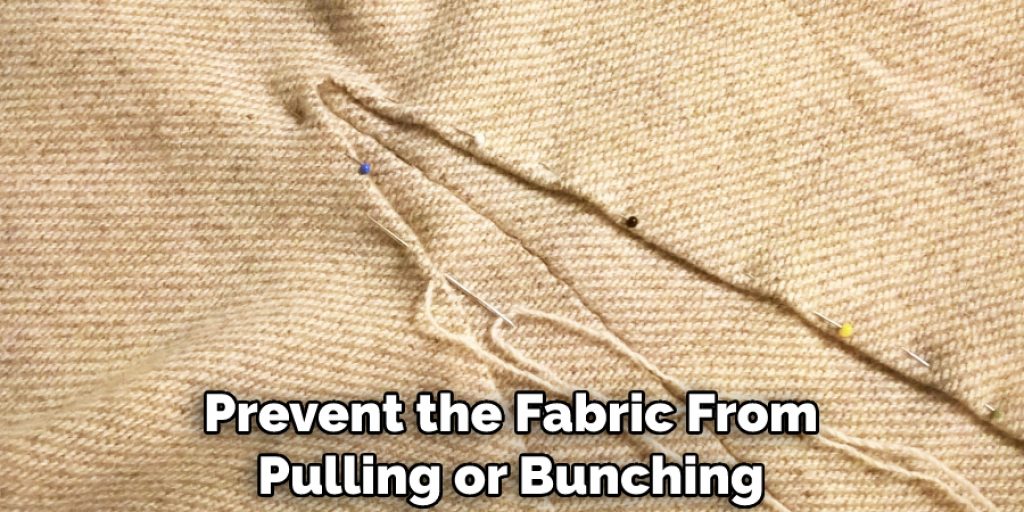
When sewing curved seams, use a tailor’s ham as support to keep the fabric in place. If you are working with large swaths of fabric, you may need to use a walking foot on your machine. This is especially helpful when sewing thick and stretchy fabrics such as fleece or velvet.
7. Seam Finishes
Consider using a serger or overlock machine to finish the raw edges of your knit fabric seams. Alternatively, use a stretch stitch or a narrow zigzag stitch to enclose the raw edges, preventing fraying and ensuring durability.
If you’re using a regular sewing machine, consider finishing the seam with a serger stitch for added stretch. Avoid using pinking shears on knits, as this will affect the stretch of the fabric and weaken it.
8. Handle Hems and Necklines
When hemming or finishing necklines on knit fabric, use a twin needle or a coverstitch machine for a professional and stretchable finish. These techniques provide a clean, parallel stitch that allows the fabric to retain its stretch.
If you’re using a twin needle, make sure the bobbin is wound with the same thread as the top spool so both needles will feed from the same thread. When sewing with a twin needle, use slightly looser tension than normal for best results.
9. Manage Knit Fabric Stretch
If your knit fabric has a lot of stretches, stabilize the seams or hems with clear elastic or stay tape. This helps prevent excessive stretching and sagging, ensuring the garment retains its shape over time.
If the fabric is particularly stretchy, try cutting it to a slightly smaller size and then allowing for some extra stretching when you sew it. You can also use a zigzag stitch to sew knit fabric and further enhance the seam’s stretchability.
10. Practice Patience and Experiment
Working with knit fabric can be a bit challenging at first, but with practice, patience, and experimentation, you’ll become more comfortable and confident. Take the time to learn the properties of different knit fabrics and adjust your sewing techniques accordingly. Don’t be afraid to make mistakes and try again. With a bit of practice, your projects will come together with ease!
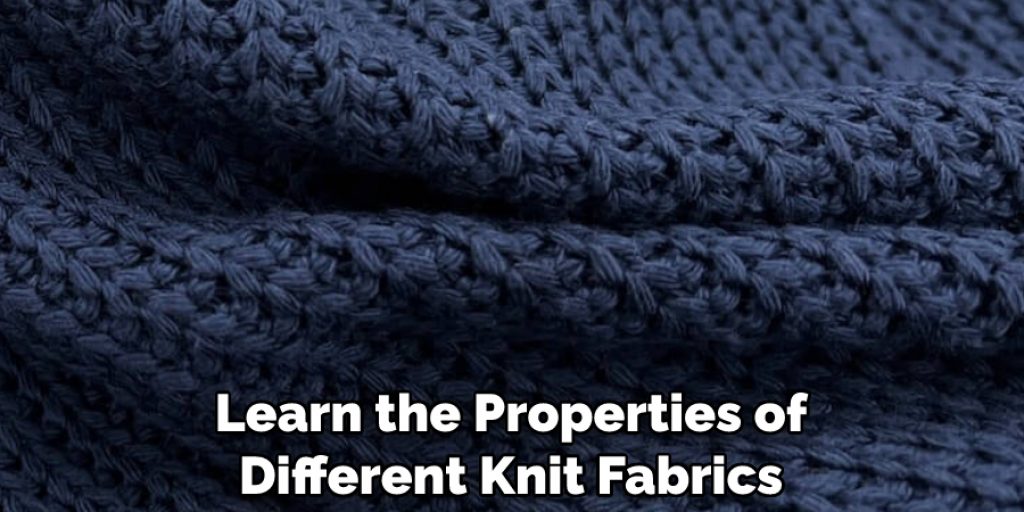
Conclusion
Sewing knit fabric is not as intimidating as it seems. After grasping the basics, learning to sew with stretchy material can be surprisingly easy and opens the door for unlimited project possibilities in the world of sewing. Utilizing different methods, from stabilizing to serving, allows you to take advantage of all that knit fabrics have to offer without fear.
Experimenting with different fabrics for different projects will be an invaluable skill set that you can employ forever. So don’t let the idea of sewing knit fabric stop you from taking on your most challenging projects yet! Get started today and learn how to sew knit fabric—you won’t regret it!

